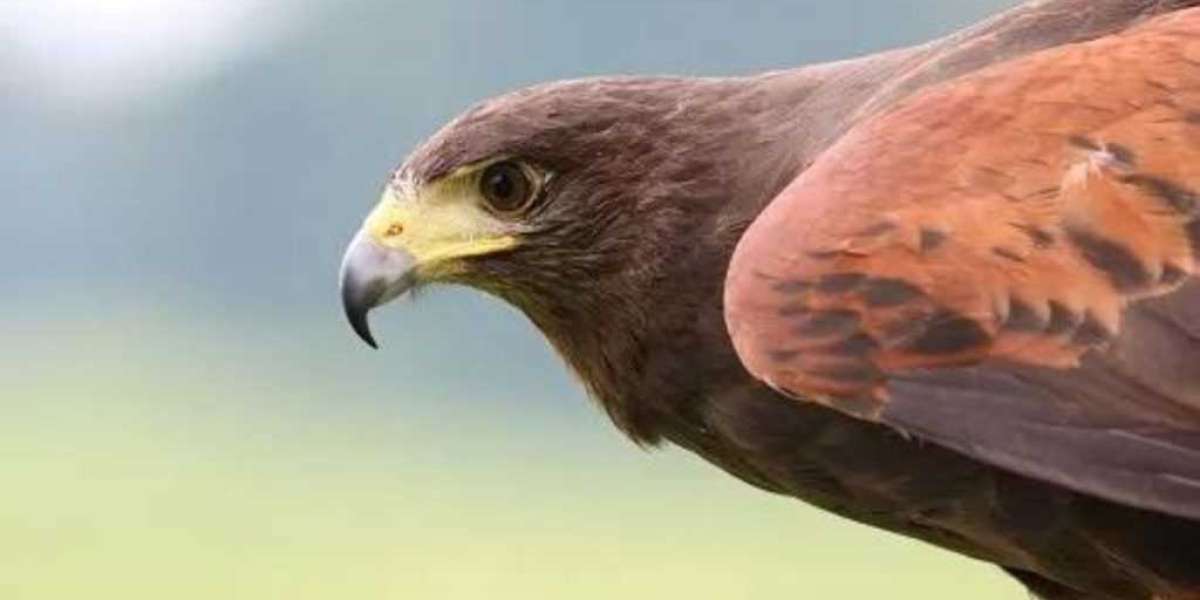Have you ever stopped to watch a hawk circling high above a field? It’s kind of mesmerizing. They just float, effortless, and then BAM! they drop with laser-guided precision on a target you didn't even know was there.
That, my friends, is Hawks vision in its purest form. And honestly, it’s not just for birds of prey. It's the metaphor I use for any company, any entrepreneur, or any leader who manages to not only succeed but completely re-shape the playing field.
We’re not talking about just setting a quarterly goal here. We’re talking about the deep, almost prescient foresight that lets a company see an opportunity or a threat years, sometimes even decades, before anyone else even knows they should be looking. If your business strategy feels like you're squinting through a fog, maybe it's time to borrow some secrets from the Accipitriformes order.
Let's break down what truly superior vision looks like, and how some of the world's most enduring success stories nailed it.
What the Hawk Sees: Deconstructing Superior Vision
Before we dive into boardroom strategy, we need to geek out on the science for a sec. Why are these raptors so ridiculously good at their job? It comes down to a few mind-blowing anatomical features that, when translated to strategy, are absolute gold.
- Unparalleled Visual Acuity: Hawks have two foveae (the densest point of light receptors on the retina) in each eye, while we humans only have one. One fovea is for viewing the immediate foreground; the other, a deep fovea, is for incredible distance vision, basically acting like a natural telephoto lens. They can spot a rabbit from over a mile away!
- Targeted Binocular Vision: Their eyes are positioned forward, giving them incredible binocular vision a key trait for depth perception, which is crucial for tracking a moving target. They don't just see a wide landscape; they see a target in three dimensions with hyper-accurate distance judgment.
- Next-Level Color Sight: Most of these birds of prey (like the Sparrowhawk) have four types of cones, giving them tetrachromatic color sight and the ability to see light in the UV spectrum. Think of how that would look on a financial projection! They see things we literally can’t, like the UV reflection off a rodent's urine trail, marking its path.
The takeaway for us: Hawk vision isn't about seeing more information; it's about seeing the right information, with superior clarity and depth, and knowing exactly how to use it.
The Two Foveae Strategy: Long-Term vs. Short-Term Focus
The concept of the two foveae is probably the single most powerful lesson for strategy. Most businesses are constantly firefighting, their sole fovea fixated on the immediate ground—Q4 numbers, next week's launch, that crisis email. That's necessary, sure, but it's not strategy.
Strategic success comes from dedicating one 'eye' to the tactical present (the ground you're on) and the second, deeper 'eye' to the distant future (the horizon).
Take Netflix's famous long-term strategy, for example. In the late 2000s, when they were still killing it with the DVD-by-mail service, they started a shift into streaming. This cost them a fortune. Customers were mad, investors were nervous. But Reed Hastings and his team, with true hawk vision, saw the inevitable death of physical media and the rise of digital infrastructure (high-speed internet). They willingly sacrificed a perfectly good business model to build the next one, years before Blockbuster had even blinked. They saw the "prey" moving before the prey itself knew where it was going. That’s not risk; that's clarity.
Interestingly, many business consultants refer to this as "ambidextrous organization"the ability to Exploit the present and Explore the future simultaneously. It's the human equivalent of that incredible structure of the eyes found in the hawks birds.
Binocular Vision: Judging Distance and Market Depth
The eagle eyesight is famed for its ability to calculate the distance to prey with astounding accuracy. They don't just see a mouse; they know exactly how fast they need to dive and at what angle to intercept it.
In business strategy, this means knowing your target market and your competitive environment with that same, precise depth. You can't just say, "We want to be the best." That’s flat, monocular vision.
The iPhone launch in 2007 is a perfect example of binocular, 3D strategy. Apple didn't just make a phone that was slightly better than a Blackberry. They saw a future where everyone would carry a computer in their pocket, connected by a fast mobile network, running apps, and managing their whole digital life. They judged the distance to that future that is, the technological maturity and consumer readiness perfectly.
They combined a superior product (the focus), with a disruptive business model (the App Store ecosystem), which gave them a massive competitive moat. They calculated the attack vector, not just the target. It’s a holistic, depth-focused strategy.
Seeing the Unseen: The Value of 'UV Sight' in Strategy
Remember how bird vision includes seeing UV light? That's the stuff that's invisible to us, the things we miss entirely. In a business context, this is where "weak signals" come in.
A weak signal is a tiny, often ambiguous indicator of a large, future change. It could be a new obscure law, a tiny shift in academic research, or a niche trend on an unknown social media platform. While everyone is looking at the stock market (the bright visible light), the strategist with Hawk vision is looking at the obscure indicators that will change the market entirely.
- Example: The rise of remote work was a weak signal for decades driven by better broadband and cheaper video conferencing. Companies that saw this UV light signal early (like certain SaaS tools dedicated to remote collaboration) didn't react when the pandemic hit; they accelerated. They had already baked that foresight into their core product design years before. The companies who only reacted were the ones desperately scrambling to buy laptops and figure out VPNs overnight.
The difference between being a leader and a follower is simply recognizing that the invisible trails left by emerging tech, demographics, or policy, are just as important as the visible trends everybody is shouting about.
The Dive: Translating Vision to Execution
Ultimately, having a superior Hawks vision a strategy is pointless without the dive, the execution. As Thomas Edison is often credited with saying, "Vision without execution is hallucination."
The hawks birds don't just admire the view; they hunt. Their descent is decisive, committed, and single-minded. They use all that incredible visual acuity to lock onto a goal and commit to it.
So, here’s my challenge to you: stop reacting, and start hunting. Carve out time this week to pull your focus off the ground (the urgent emails and meetings) and look at the distant horizon. Ask yourself:
- What’s the major force (tech, demographic, political) that will fundamentally change my industry in 10 years?
- What small, weird signal am I currently ignoring because it seems "too niche" or "too soon"?
- Are we currently sacrificing a small, existing profit to build an inevitable future?
If your strategic plan doesn't feel a little uncomfortable, a little too forward-looking, then you're probably just looking at your feet. Get up higher. The view is amazing, and the target is waiting.







